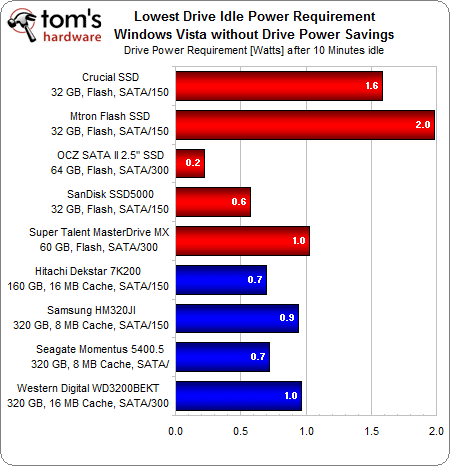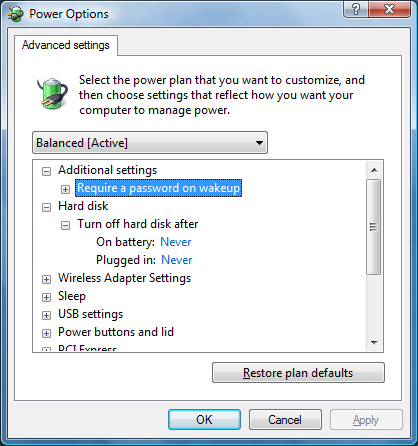Flash SSD Update: More Results, Answers
Test 4: Drive Idle
Last but not least, we wanted to find out the lowest idle power of all of the drives. While we learned that hard drives sometimes have complex power saving mechanisms, Flash SSDs typically don’t. Let’s look at the drive idle power after 10 minutes of Windows Vista inactivity.
We disabled the drive power management options in Windows Vista to be sure that the idle power requirement actually reflects each drive’s characteristics and not Windows’ energy saving features.

If your notebook isn’t often taxed, then a mechanical hard drive isn’t that bad at idle. We measured between 0.7 W and 1.0 W depending on the drive, and this is typically less than with three of the five Flash SSDs. We didn’t expect the Mtron drive to be efficient in idle, and we did expect the San Disk SSD to be very efficient, as this is a characteristic of this low-performance Flash SSD product. However, the Super Talent MasterDrive MX cannot really beat the idle power of the hard drives by much, reaching exactly the same power requirement as the most energy-hungry hard drive in idle.
Again, the new OCZ drive sets new records with requiring only 0.2 W when it’s idle.

Get Tom's Hardware's best news and in-depth reviews, straight to your inbox.